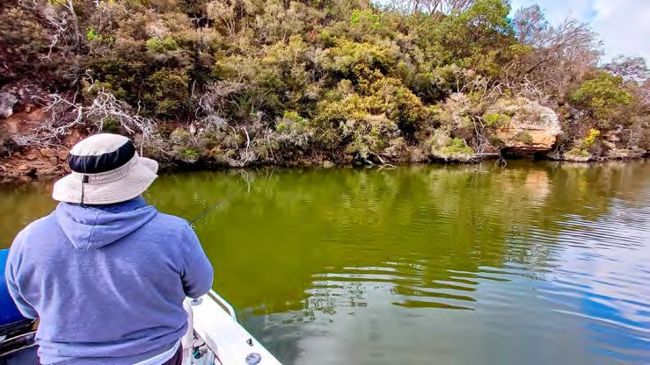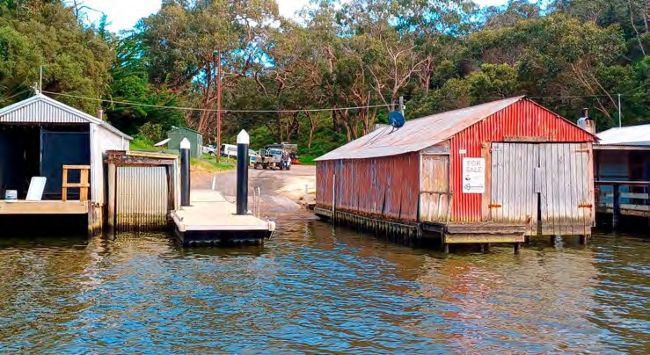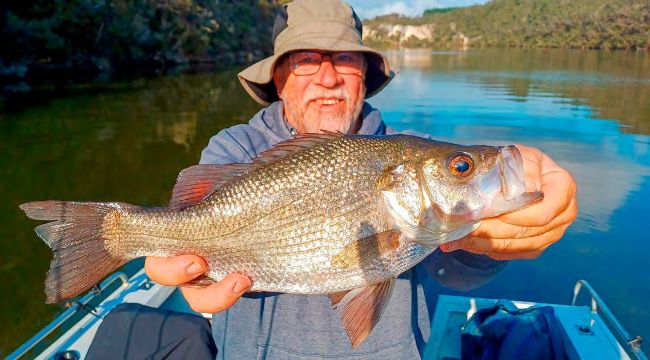THE GLENELG RIVER CAN’T GET ENOUGH!
It’s obvious how much Max Fischer loves the Glenelg River. In this piece he explains exactly why.
The Glenelg River is a long river beginning in The Grampians and emptying into the Southern Ocean at a town called Nelson. It runs briefly through SA in Donavans Landing. Being around a similar distance from Adelaide and Melbourne, Nelson sees fishos from both places targeting the mighty mulloway, bream, and estuary perch. The latter will not be a readily recognisable species to many South Aussie estuary fishos because while there may be small, localised populations elsewhere in the state, the only place to be able to target these great fish with regularity is on the Glenelg!
I have had a long fascination with EP’s, introduced to me around 10 years ago. My targets then on visits to the river were bream, but as soon I was introduced to EP’s, I fell in love with them. They are a worthy adversary, taste great and can be caught along almost all of the river.
One of my regular fishing buddies had also been introduced to these enigmatic fish, and together we shared many a great day catching them by the dozen. Above all else, however, he wanted to get a 40+cm model – something I’ve achieved a few times already and I’m now searching for that Holy Grail 50cm model. With this, our search for perch was hatched. Tides were checked, a plan was formulated, and annual leave days sought so as to make it a reasonable attempt at ticking off the sought-after targets. Like all things however, as the days for the trip drew near, the weather was making it almost impossible to proceed, and just two days before our scheduled departure the call was made to cancel. It turned out to be a smart move, as the weather turned out to be almost cyclonic and many buildings in the small town were damaged from the storms that came through that weekend.
As many would know, organising available time among a collective of people can be difficult. We had to settle for a weekend when the tides we less than ideal, and with a second date set, we both watched the weather eagerly, hoping that a repeat of the first sortie would not eventuate.
Things were looking less than promising for the first day of the trip, with strong SW winds forecast to hit early morning before abating slightly for the remaining two days. We pushed on, deciding that if we had to spend the first day by a fire sipping scotch, it would not be a total loss and that’s how it began.

Estuary perch are fond of soft plastics
Arriving late in the evening, a quick look at the water at the local ramp had confidences high. There were no fish rising, but the aftermath of what must have been was evident. The wings of flying ants were everywhere, and the fish had no doubt had their fill. We hit the beds in anticipation of what the next day would bring.
The forecast was for the strong winds and rain to begin well before dawn, but awakening at 4am to answer a call of nature, there was no wind or rain and I was a little surprised and hopeful that the forecast was wrong. However, no sooner had I finished and ducked back under the quilt than there was a clap of thunder and the sound of rain falling on the iron roof above. At least it was not windy.
I arose from the bed an hour or so later and the wind was still down, so I pondered about heading out. However, after a look at the rainfall radar we thought better of it, instead using the time to prepare tackle and enjoy the tranquillity. From our home for the next few days we could see clearly the rain squalls drift across the estuary before hitting the house.
The forecast for day two was slightly better – drier and with the wind abating further. Reports suggesting the fish were in the middle reaches had us driving to a ramp around 10km upstream of the Nelson township. This would help lessen the distance needed to travel in the boat, especially as much of it is speed restricted between 4-8 knots. This section of the river weaves its way through SA and is very picturesque, with high tree-lined, rocky cliffs climbing well above the water. It’s this that also helps to protect from the wind most days, but not all! The walls can sometimes funnel the winds, making finding a lee shore difficult as the wind barrels down one way and then the exact opposite around the corner!

My confidence was boosted a little more when, on arrival, there were already some trailers in the parking area and boats on the water. As the sun was well up by this stage, the option of fishing surface lures for the fish was put away early, and instead we fished a mixture of deep diving hard bodied lures and soft plastics. The word that hard bodies were accounting for many of the fish suggested that they were close to the edges, but the sounder indicated otherwise, and it was my companion who scored first on a Z-man grub fished deep off the second ledge. Recall how I said he wanted a 40+cm Perch? Well, would you believe the first fish of the trip was a 43cm EP. I was chuffed and disappointed at the same time because I was yet to even get a bite!
The sounder showed patches of many fish, but these appeared to be smaller sub-legal perch. We based this on the numerous short bites and had it confirmed when some were unlucky enough to find the pointy end of the hook. Rather than fish using the sounder, we opted to fish the structure and found that we were targeting singular fish on deeper rocky structure with trees over hanging or in the water for the best results. Armed with this knowledge, we would look for suitable banks and set up the boat to drift in a way that allowed us both to cast into the deeper water ahead of the drift. While I was finding things very tough, the same could not be said of my companion, who was catching ALL the fish. We soon had a bit of a pattern worked out, however, and although we could only muster up seven sizeable perch and bream, there were also many smaller fish caught and released and stories of fish that won their freedom.

The Nelson boat sheds are iconic landmarks
Our third and final day would be a shorter one on account of having to leave the accommodation and make the long trek back to Adelaide. We started a little earlier and wasted no time in getting to the most productive spots. Again, we found fish willing and sizeable, with the biggest perch hitting 44cm – caught by my companion, which well and truly helped to make our search for perch just that little more special.
I was lucky to have work commitments in Mount Gambier the following week, which coincided with favourable weather. I was keen to have another crack at the perch and see if they were still in the area. I really wanted to fish the evening top water bite, but despite numerous casts with a plethora of previously successful lures, there was nothing to suggest there would be a surface bite.

That’s a horse of an EP!
EP’s will usually signal their presence and willingness to eat on the surface, boofing much like a barra does. EP’s are also known as the barra of the south –not just for this reason, but if looking at them from above, the resemblance is uncanny.
Heavily weighted plastics fished deep from the walls were what the perch wanted, and many a battle was lost before one finally made it to the boat. It was getting late, however, and I could not continue. Judging by the number of boats I passed just starting their sessions that evening, I’m sure I’d have done better if time allowed.
Again, I was lucky to have another weekend down on the water courtesy of work commitments, and I didn’t want to waste any of it, beginning in the pre-dawn. I again started with the surface lures despite the lack of evidence to suggest there would be a bite, but soon put the walkers away and switched to the plastics. Still the sounder showed many fish, but these were small, and the larger fish seemed to be sitting solo.
When fishing plastics, it pays to learn how to rig them weedless. There is a lot of fallen timber and rocks where the lure needs to be, and fishing weedless really does help with keeping lures free from snags and assists with removing them when they get stuck.
Again, time would be limited on account of needing to be out of the house at a prescribed hour, but the fishing was really on, with a number of bream and EPs from 33cm to a new PB for me of 46cm.
The Glenelg River is such an amazing place, and its popularity around holiday periods is high. There is great fishing to be had all year round. The weather can sometimes be horrendous, but other times it’s calm, warm, and delightful. Our accommodation, River 2C House, was well appointed, comfortable and well positioned, with excellent views of the estuary and a short walk to the town boat ramp and pub. The price is very reasonable, too.

A nice bag of plastic-caught perch
Nelson used to have a kiosk that sold all sorts of food and stocked some household food stuffs, but sadly this is now closed, so if going down it pays to be self sufficient in terms of food and drink. Fuel is easily obtained at the local servo, where some fast food and coffee is also available.
If camping is your thing, The Glenelg River has you covered also with many a camping spot dotted along the river. These have the benefit of allowing you to tie up the boat and be fishing almost instantly rather than driving the length of the river of from the nearest suitable ramp.
With SA’s bream fishery a mere patch on what it once was, a trip down to the Glenelg River could be just the ticket to seeing that dusty bream gear come out of hiding.